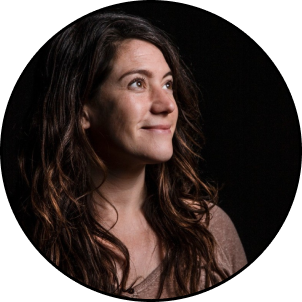Ep 11. Eco-livings, A New Approach Towards Sustainability
🎙️ In this episode of Colivers Club, we chat with Stefanie Prossinger, the visionary eco-living advocate behind Finca la Palmera, a one-of-a-kind coliving space nestled near Tarifa, Spain.
Stefanie walks us through her inspiring transition from working in hostels in Austria to building a community-focused, eco-friendly coliving project. We discuss how she turned a 200-year-old B&B into a thriving hub for sustainable living, the hurdles she faced bringing her vision to life, and the importance of longer stays for creating meaningful connections. Stefanie also shares her creative strategies for minimizing waste, embracing permaculture principles, and promoting a lifestyle that’s deeply connected to nature.
Whether you’re passionate about sustainable living or curious about what makes a successful coliving community, Stefanie’s journey is full of insights and practical advice. 🌱✨
Read Stefanie's Interview
César: Hello, welcome everybody to Colivers Club. I’m your host, Cesar Alberca. Today, I’m here with Stefanie Prossinger. She’s an eco-living enthusiast and manages a coliving near Tarifa in Spain, called Finca la Palmera. Hello, Stefanie, how are you?
Stefanie: Hello Cesar, thank you for having me here today.
César: As always, this episode is powered by Mapmelon. It’s a platform where you can find very nice colivings. So yeah, check it out. Now, Stefanie, I mentioned that yours is an eco-living. What exactly is that?
Stefanie: Yes, indeed. It’s a term I came up with myself. It’s basically a blend. Before it was an eco-lodge, or at least I tried to make it into something sustainable. Then with the coliving principle, blending the sustainable and community aspects, I came up with eco-living.
César: So eco is not for economic, right? It’s for ecological.
Stefanie: Yes, it is for ecological.
César: Oh, okay. I thought, maybe it’s something about costs, but it’s clear now. Your website says you’re running a non-profit organization?
Stefanie: Yes, we’re in the final stage of registering as an association. Our eco-living members are like family members. It’s all about community and giving back, not about being clients or customers.
César: And what made you start an association like this?
Stefanie: Well, community living is something I really believe in. I wanted to create something meaningful that blends sustainability and community. Business just didn’t feel right for me. It’s a passion project, and I want all the effort to go back into the community or into similar projects that benefit the planet.
César: That’s wonderful. Let’s talk a bit about your background. You started in tourism, right?
Stefanie: Yes, my first full-time job was managing a hostel in Salzburg, Austria. I loved it, but I also loved traveling and exploring different cultures. In my 20s, I traveled a lot, working in hostels, helping set up startups. It was always my dream to have my own project, and that dream led me to Tarifa in 2014. I was just supposed to stay a night, and here I am, 10 years later.
César: Spain is an easy place to fall in love with, right?
Stefanie: Absolutely! Tarifa is special, with the two oceans meeting and views of Africa. It’s a very unique place with lots of national parks and untouched beaches.
César: So, what was the transition like from managing a hostel to starting a coliving?
Stefanie: It was quite a shift. I ran a hostel in the city with young backpackers playing beer pong, but it didn’t feel right anymore. I had an early midlife crisis, went to India for yoga teacher training, and came back wanting to do something different. I looked for a quieter, greener space and found Finca la Palmera in 2019. It was a B&B run by an elderly couple, and I took over from them.
César: Then something happened in 2020, right?
Stefanie: Yes, the pandemic hit. But in hindsight, it was the best thing that could have happened. It made me rethink the bed and breakfast concept. I wanted more of a community vibe, with people sharing meals and experiences like in hostels, but that wasn’t happening. Transitioning to eco-living gave me a way to incorporate the community aspect I was missing.
César: How did you make that transition?
Stefanie: There were multiple things happening at once. Half of the property is a newer building, but the other half is a 200-year-old house that needed a lot of work. I had to create communal spaces, like a kitchen, living room, and coworking area. And, of course, I had to fix the roof during the pandemic, which was a whole adventure.
César: And why the one-month minimum stay?
Stefanie: I realized that building real connections takes time. A weekend or a week just isn’t enough. It also didn’t feel sustainable to have people flying in just for short stays. I didn’t want to encourage that kind of tourism. So, the idea was to create a space for longer stays, and that’s when I learned about coliving.
César: You hadn’t heard of coliving before?
Stefanie: Not really. I’d heard of digital nomads, but it wasn’t until 2020 that I started researching coliving and realized it was the perfect fit for what I wanted to do.
César: What were the biggest changes you had to make to turn the B&B into a coliving?
Stefanie: The biggest change was creating communal areas. Before, the main house was the private space of the previous owners. I had to make it a place where people could meet and interact. That’s what coliving is about—sharing spaces and building a community.
César: Thank you so much, Stefanie. It’s been great learning about your journey and your eco-living project.
Stefanie: Thank you, Cesar. It was a pleasure being here!



0 Comments